The days may be getting shorter and there may be a chill in the air, but gardening days are not done quite yet!
Even in the colder days of October and even in fairly northerly locations, there is still valuable planting to be done. So what should you be thinking about planting in October as fall comes to call in earnest?
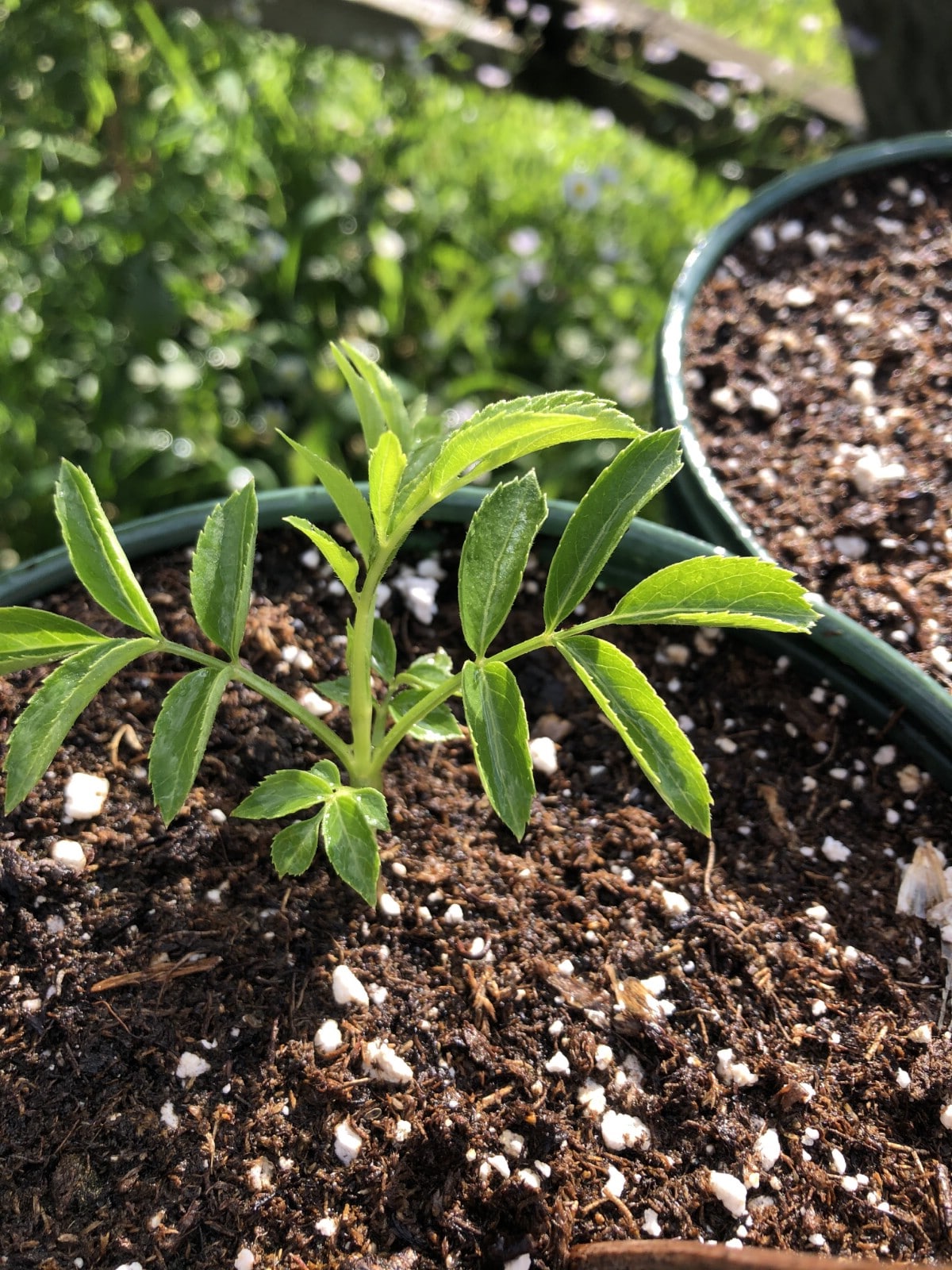
Jump to:
A Note on Location and Growing Zones
Before we delve too deeply into that answer, let’s get clear on what areas we are talking about for October/fall planting. Because as we know, locations, temperatures, frost dates, and growing zones can vary quite a lot. In actuality, though, for the plants and crops we’re talking about here, the difference may not be as vast as it seems. For the majority of zones, you’re sure to find something worthwhile (more than worthwhile) to plant in October.
The information in this article is based roughly on the middle growing zones (5b/6a), but applicable to most growing locations (with perhaps a little modification). To hone the timing for your specific location, for every zone higher than USDA growing zone 6, plant up to two weeks later; for every zone lower, plant two weeks earlier. Of course, you should also consider your frost and freezing dates and your own possible microclimate based on your personal experience (you can see a difference of days or weeks even in different elevations in the same town).
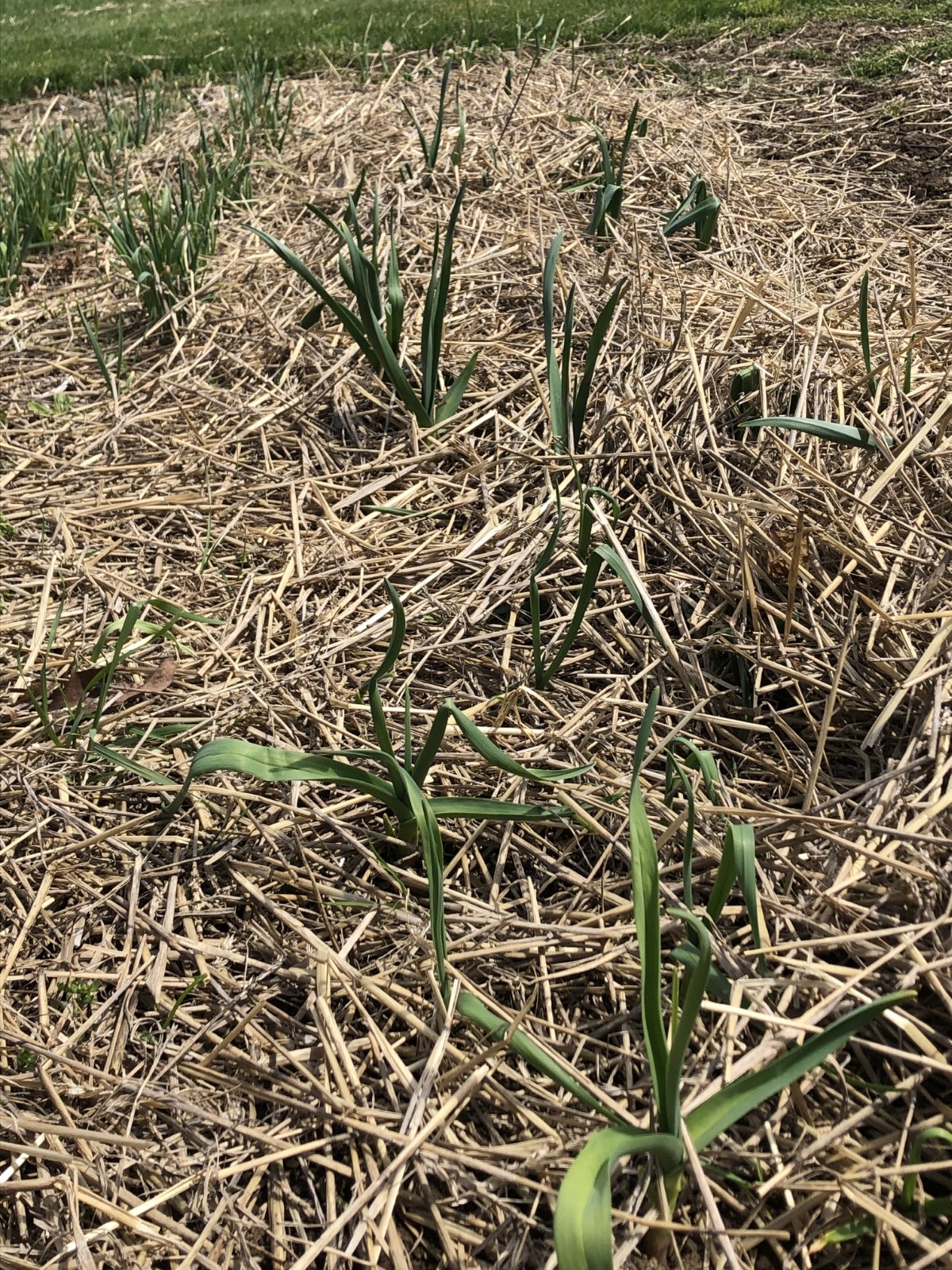
Note that USDA hardiness zones are based on average winter temperatures and plant survivability, not on frost and freeze dates. The crops included here are not much affected by frosts, but hard freezes and ground freezing is an issue because the goal is to get most of these crops situated before the harshness of winter.
USDA growing zones are the standard for knowing what can and cannot survive in your growing location. They are based on the average low winter temperature and are then separated by increments of ten degrees Fahrenheit.
If you’re not sure what zone you’re in, it’s easy to figure out. Find your growing zone here: https://planthardiness.ars.usda.gov/ https://www.fs.fed.us/
All of this said, the timing of these crops is a bit more forgiving than the timing of crops planted in the spring. In the spring we are looking heavily at normal last frost dates and average warming temperatures to know when things can safely live outside. When you’re planting in
October, though, this isn’t a concern because we basically know it is going to frost and probably freeze—we’re just tucking hardy things in before the freezing happens.
The short story is this—don’t overthink fall planting, and give yourself some wiggle room if you’re tight on time.
What Types of Garden Plants Can Most Places Grow in October?
What you can grow in October and what you can plant in October are two different things. This is where the term “fall gardening” gets a little confusing for people—because in reality, what most people plant to actually harvest in the fall is planted much earlier than October. What you plant in October is usually for next year’s spring or summer harvest.
First, let’s talk about what you might be able to grow in October.
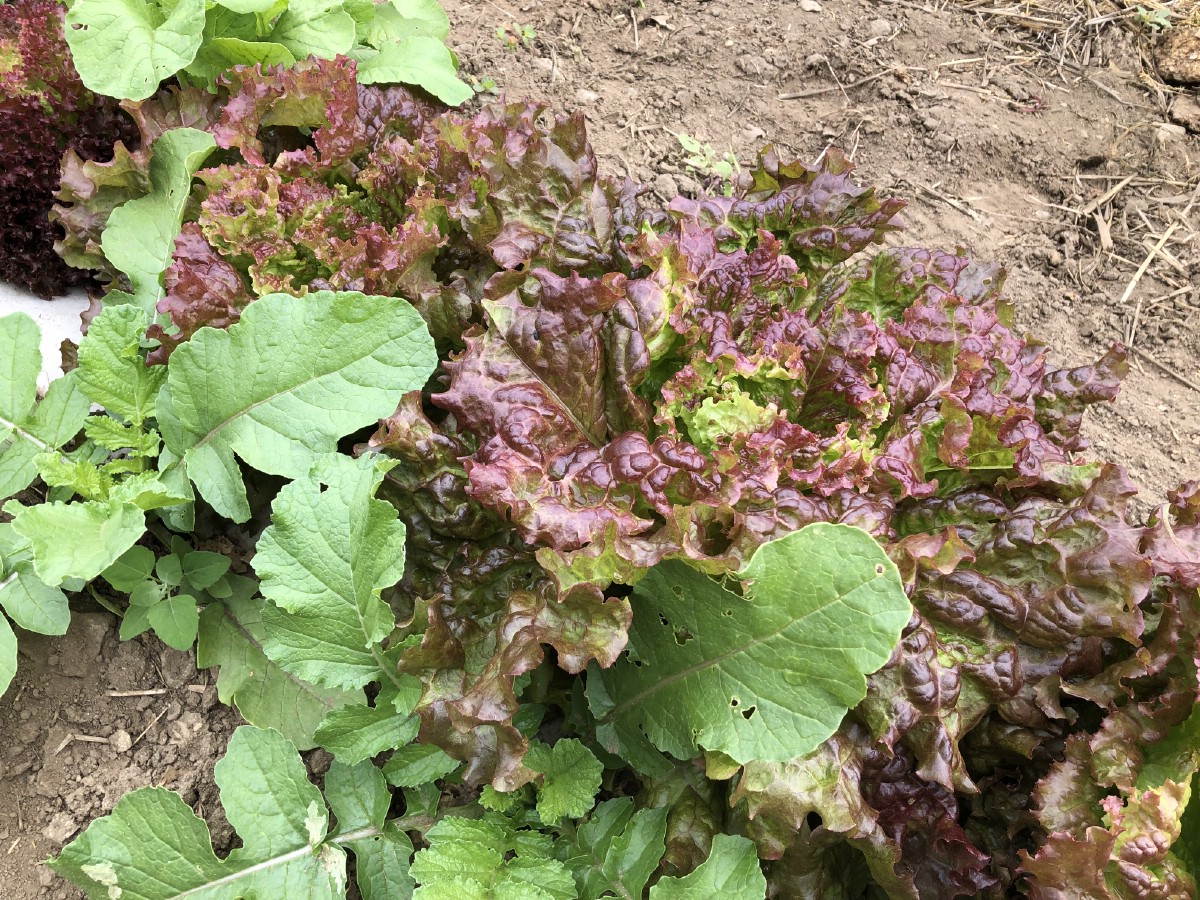
Primarily, you can grow cold-hardy crops that do not die with frost. However, it’s important to note that for crops you want to harvest in October, most of them would have had to have been planted in August or September—unless you live in higher zones with a longer growing season.
Plants that you planted either earlier in the summer and that are still living and producing, or that you planted late in the summer for fall harvest may still produce and yield a harvest straight through the month and perhaps longer if it is a particularly warm year with few very hard frosts.
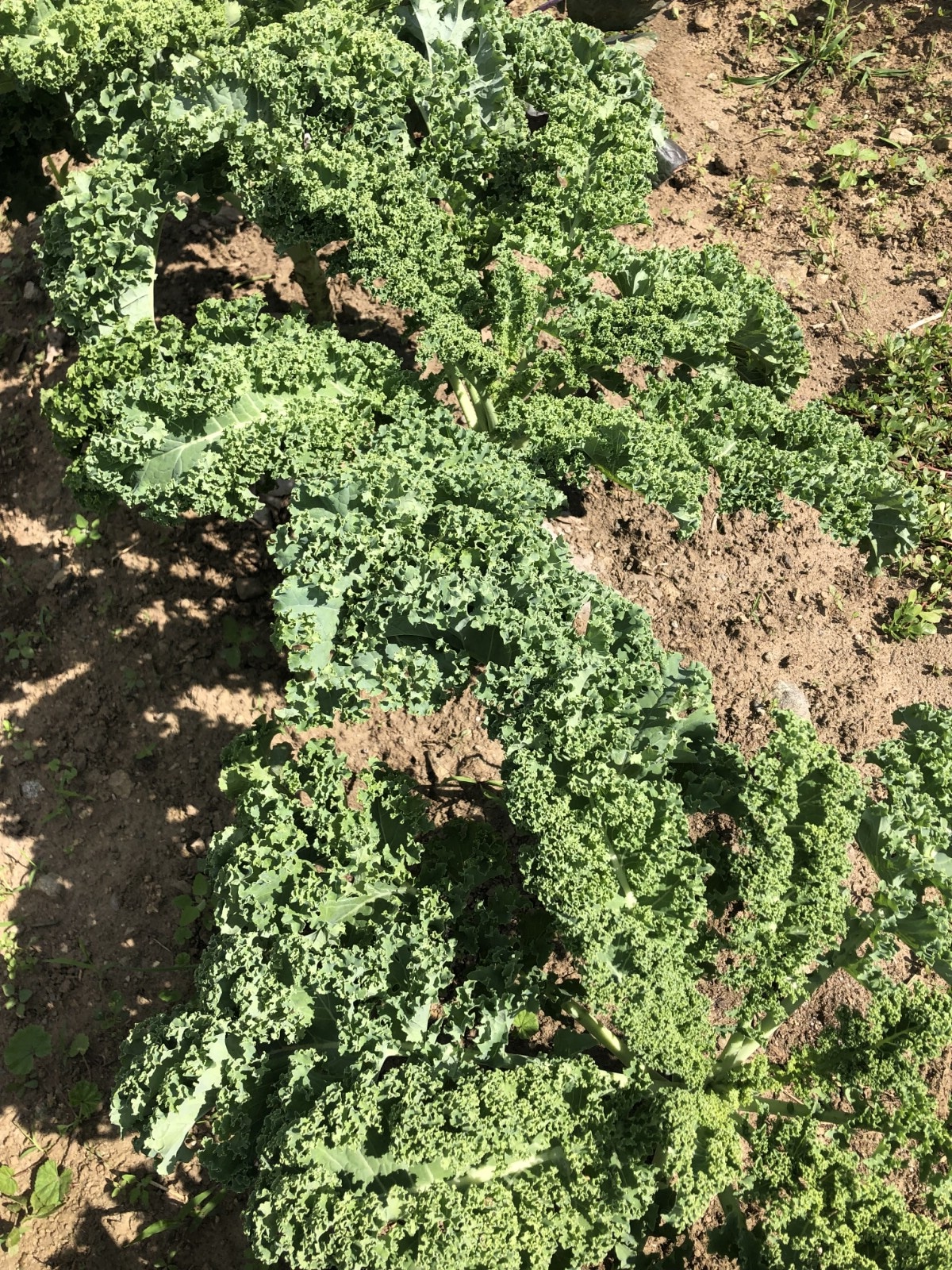
These crops include:
- Lettuce–if started from transplants, lettuce planted in early October may grow to harvestable size but may require the help of a harvest extender like small row covers or hoop systems
- Spinach—see note for late-growing lettuce
- Greens—(mustard greens, arugula, etc.) see note for late-growing lettuce
- Swiss chard—see note for late-growing lettuce
- Kale
- Broccoli
- Cauliflower
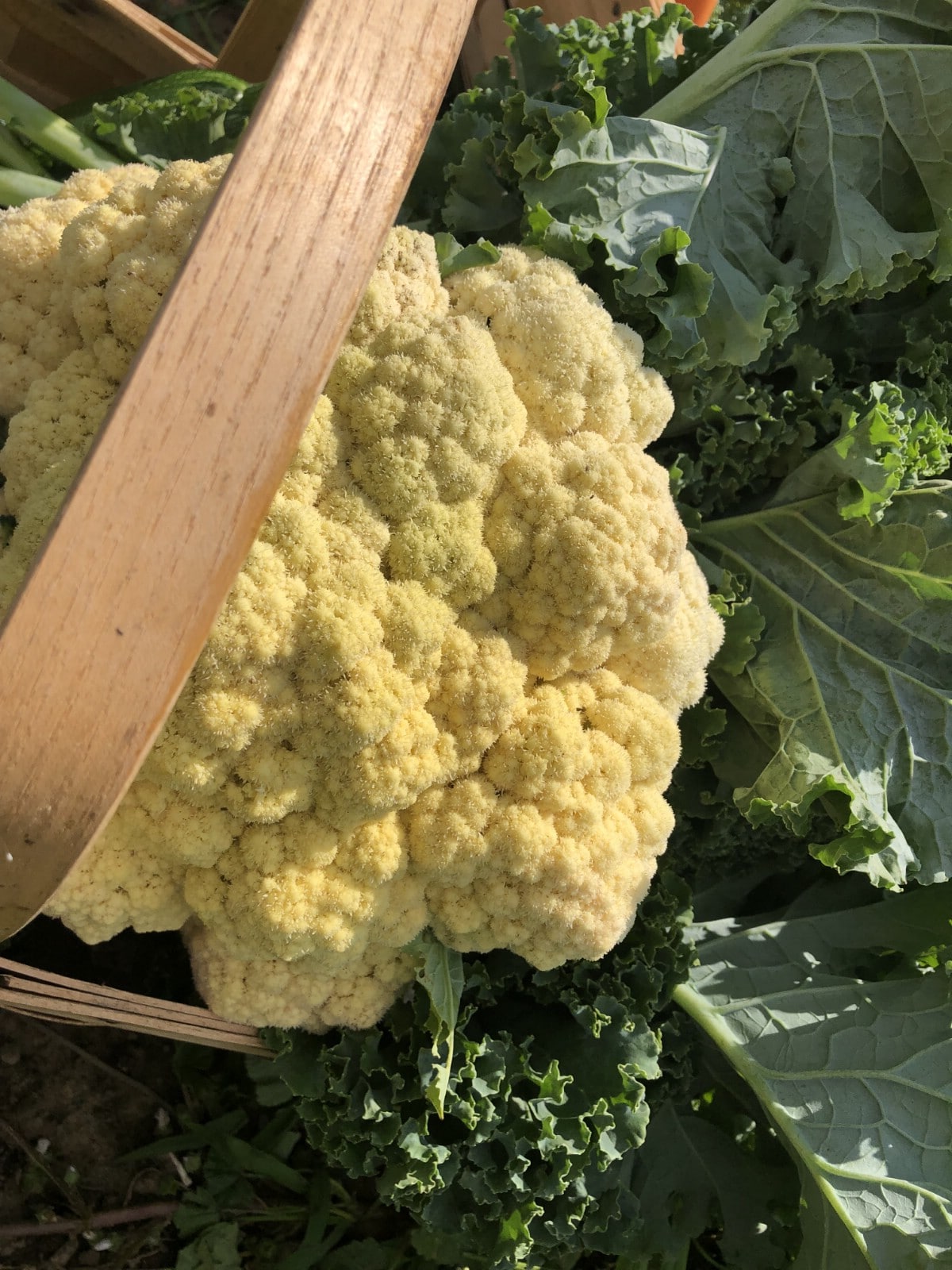

Plants and Crops to Put In The Ground In October
While some of these cooler crops continue to grow on, it’s time to do some final digging and real planting. You’ll enjoy these crops either next year or in later years to come (and perhaps for many years to come).
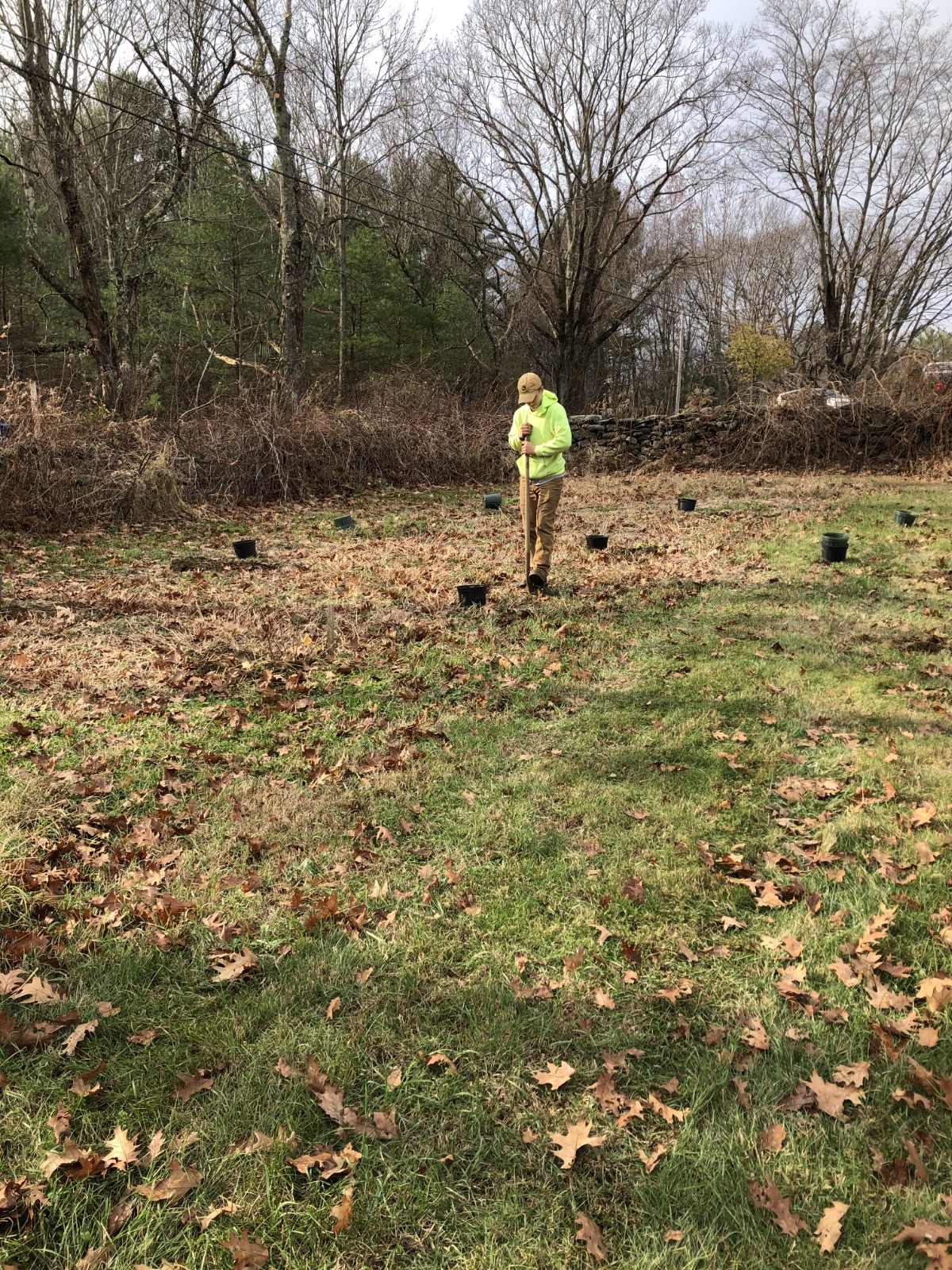
The idea behind planting certain crops, covers, bulbs, and bushes in the fall is that they will have a short but adequate period in which to grow while the temperatures are cool but the ground temperatures (soil temperatures) are still warm enough to support root formation and root growth.
As the ground temperature drops, the plant or bulb will then go into a dormant state for the winter but will already be in place and ready to wake and renew that growth very early in the spring—earlier than you would even be able to work the soil. This results in strong roots and the longest possible growing season for those plants making them bigger, better, brighter, and better-yielding.
This long period of growing and early start are really necessary for many plants and crops and without it, they often will not live up to their expected potential; they may not bloom or yield at all in the first year in the case of some perennials. Fall planting can also be a way to get basically a whole year’s head-start on bushes and perennials.
For some annual crops, fall planting is the only way to get a sizable crop.
Flowers and Crops Grown From Bulbs
Much of what we plant in October are bulb-type crops. These are the crops that need that early start to yield well. Some are pretty disappointing if you wait until the spring to plant them. The added benefit is that the planting for these crops will be done come next spring so you have more time to focus on your more tender new plants and vegetables. You’ll never regret having one less thing to do during the squeeze of the spring planting season!
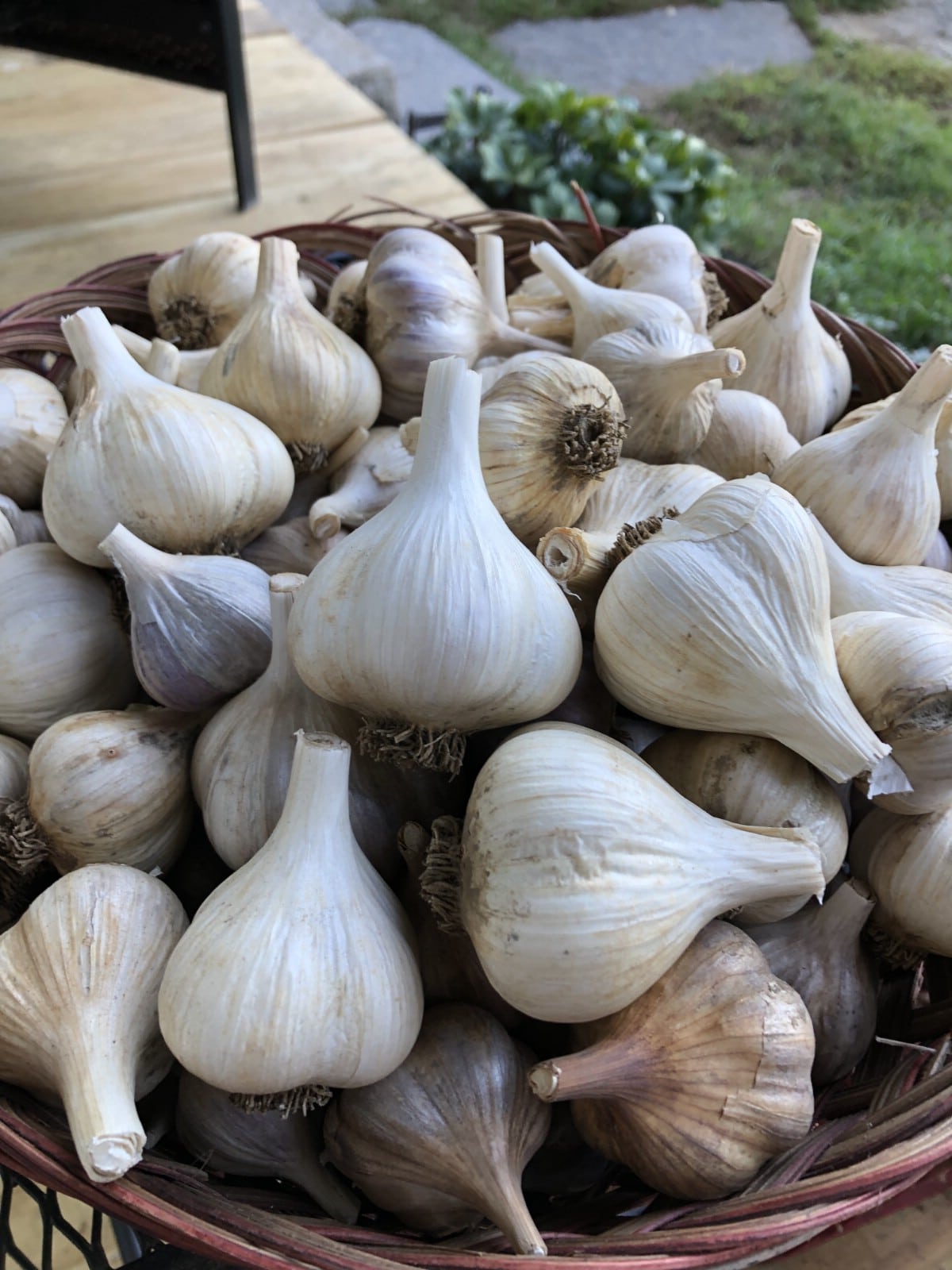
Some of the more common crops and flowers to plant in October include:
- Garlic—garlic performs best if planted in the fall and overwintered, and then harvested in June or July (varying by location and variety). This is the way to get the largest cloves and bulbs. Though a spring planting is technically possible, you would need to plant very early in the spring and even then, the results are usually disappointing. On average, October is the month to plant garlic.
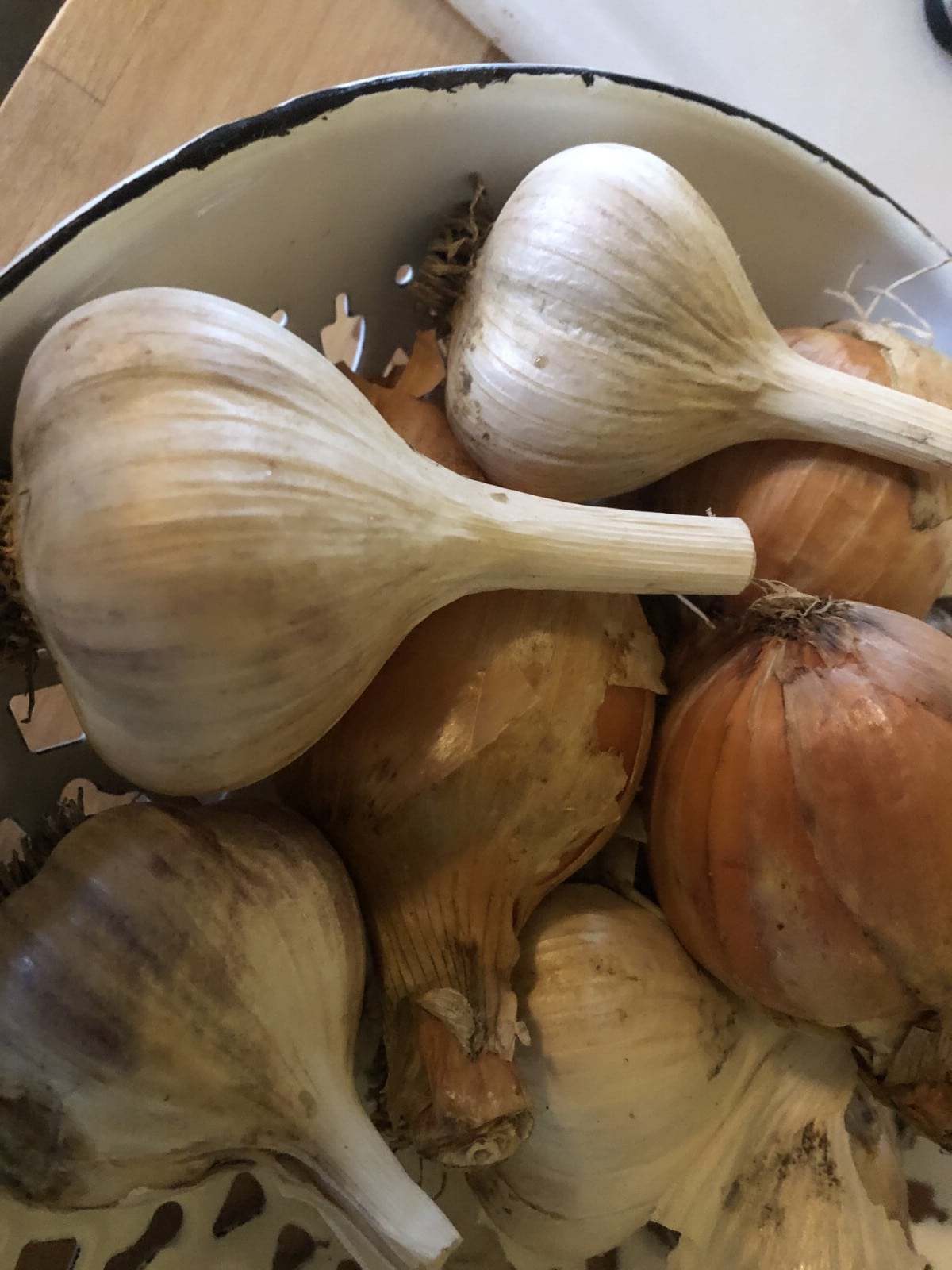
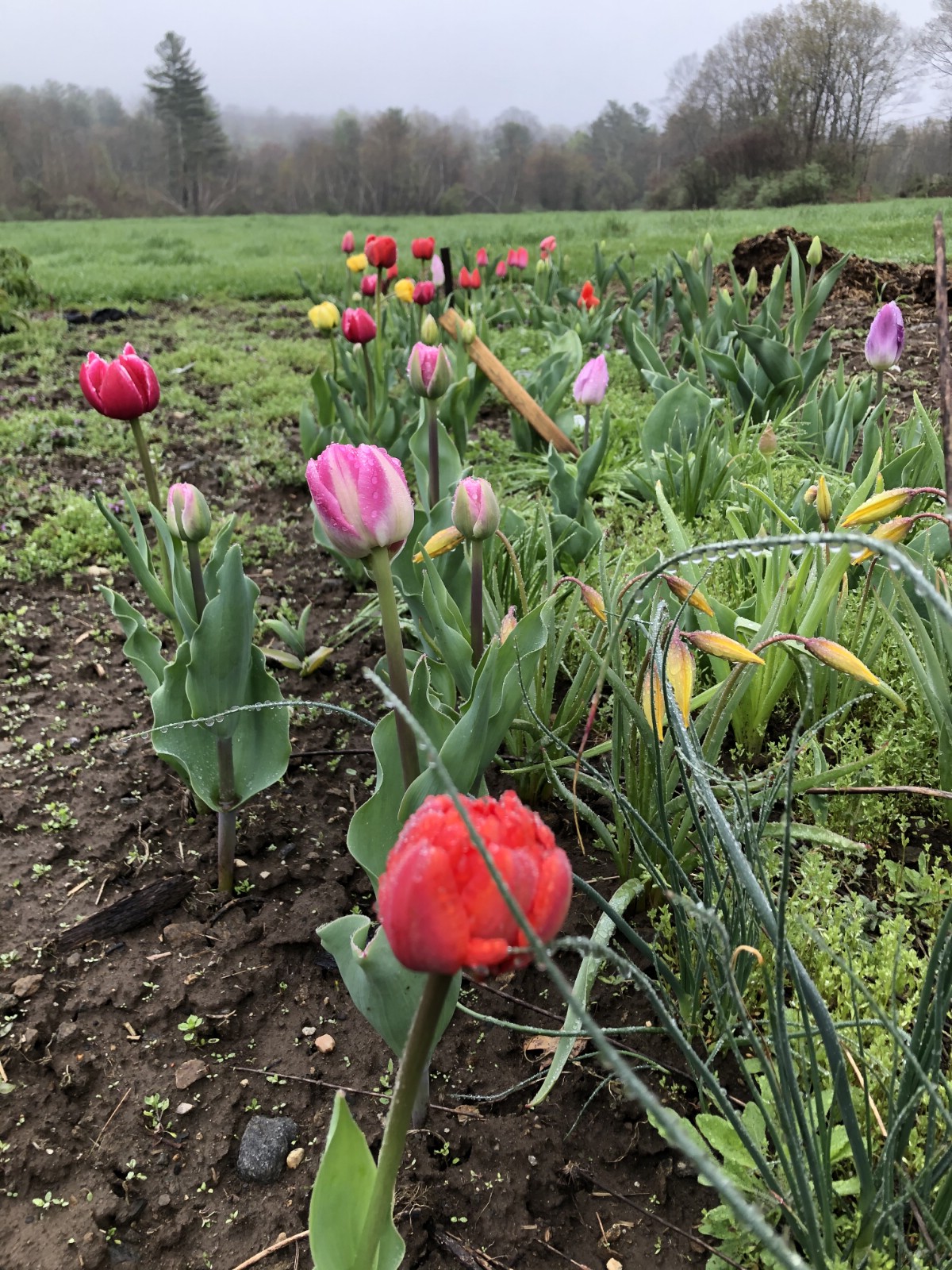
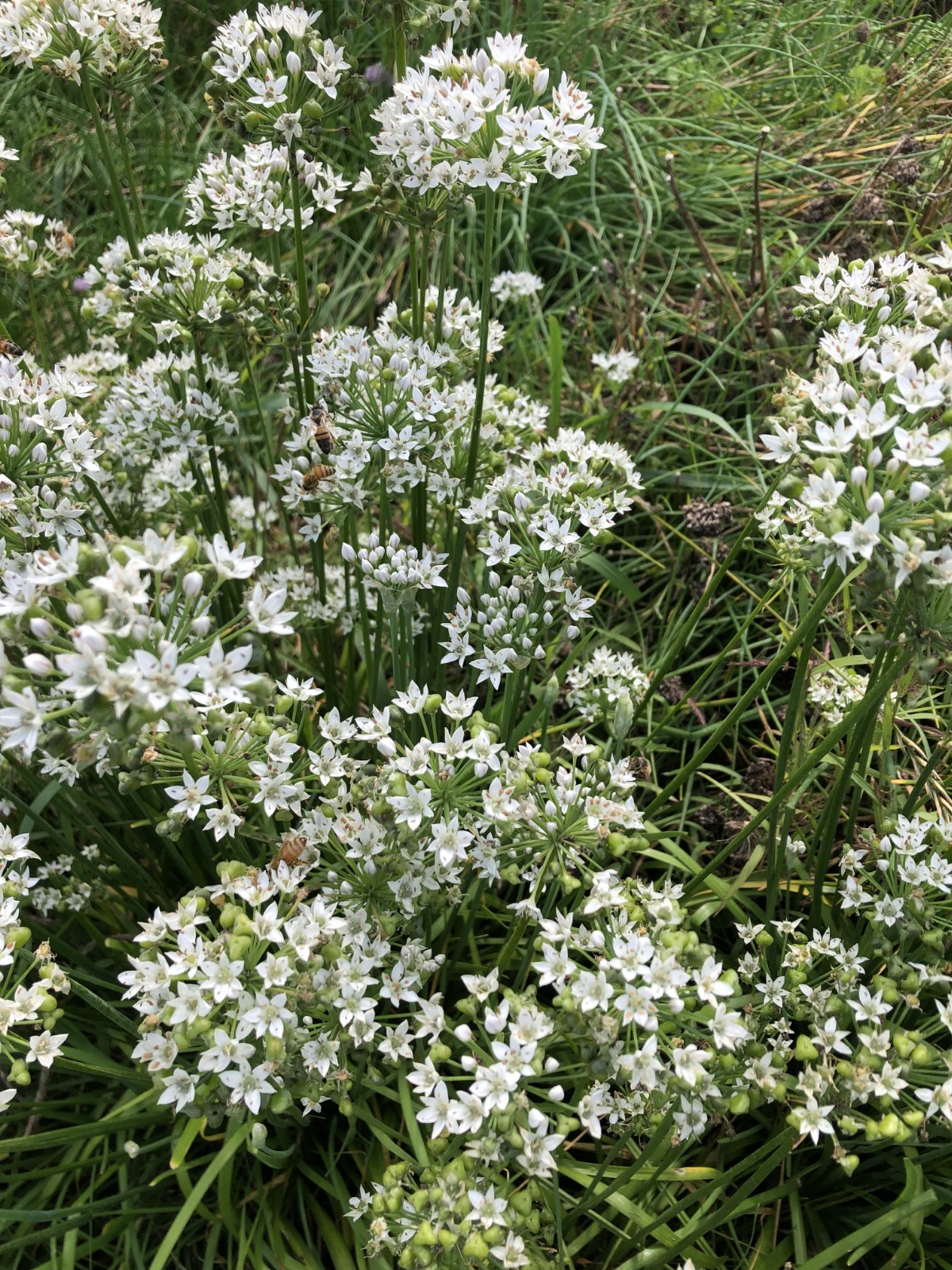
Note that not all bulbs are winter-hardy in all areas. For example, gladiolas and tubers like dahlias will not survive winter ground freezes in many locations. Basically, if a bulb is one that requires digging in your growing zone, it is not one that you want to plant in the fall.
Some of the higher, warmer zones may have more bulbs that can be fall-planted. Select your fall-planted flower bulbs according to plant hardiness recommendations for that specific flower or variety.
Note that even within wider bulb families some varieties may not be as hardy as others, and so therefore you want to check the planting time and cold hardiness for the specific variety of bulb that you are planting. For example, Dutch irises and Siberian irises are hardy in zone 5 and can be fall planted, but not all varieties of iris should be planted in the fall in zone 5.
Plan to mulch your fall-planted bulbs to protect them against winter extremes, conserve moisture, and help control early spring weeds.
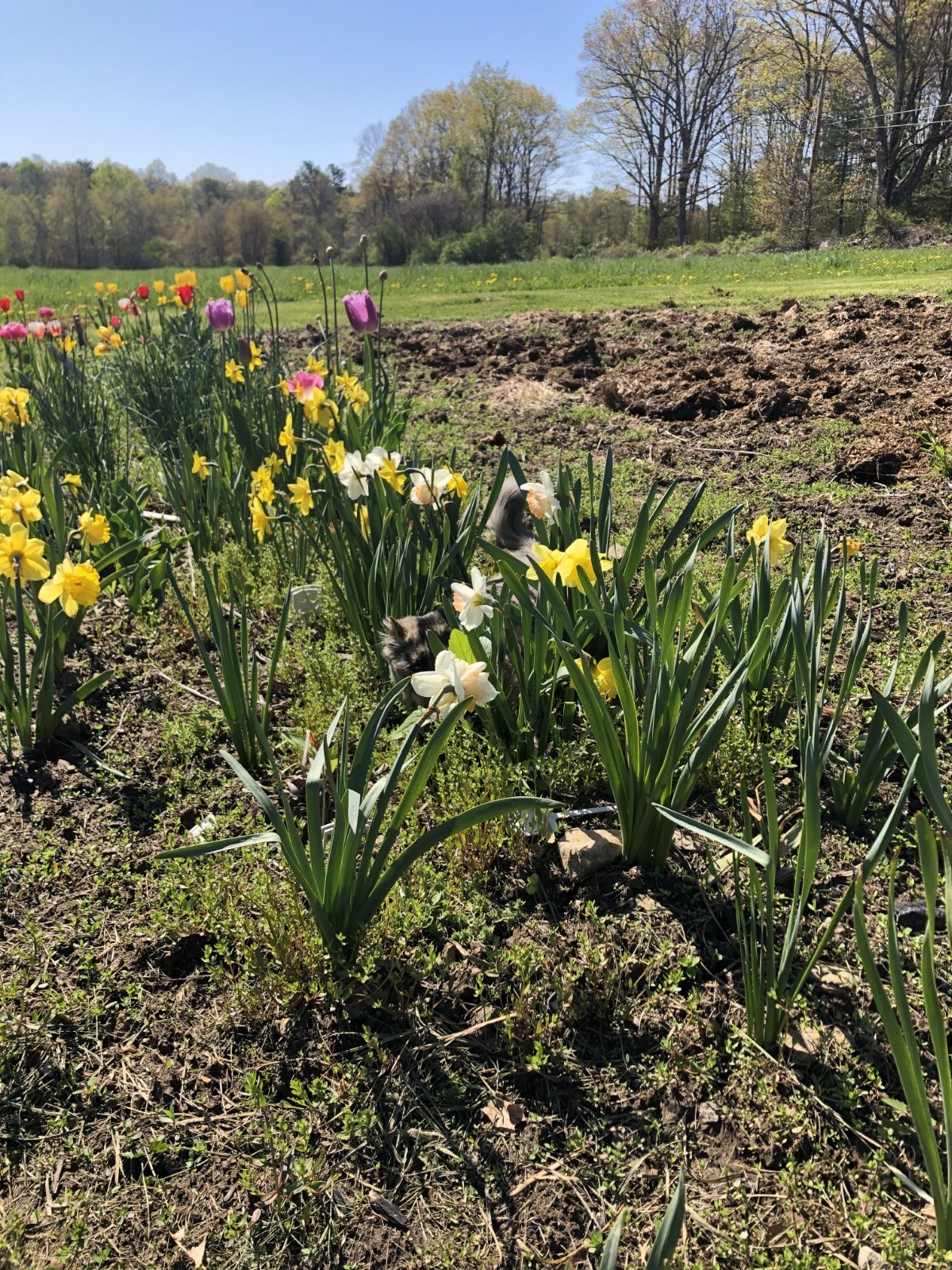
Plants to Divide and Plant in October
Many of the plants and crops that grow as perennials need to be divided for optimal continued good growth. Over time, perennial plants that are never divided can become root-bound and get smaller and produce less, not more.
Fall is the right time to do that for most of these crops, and so October, with its lower garden growing and harvest demands, is a good time to divide plants.
This also means that October is a good time to put these plants in the ground in most areas, even if you have to buy them or plant them from nursery stock.
Keep in mind that people who have these types of crops and are digging and dividing for the health of their crops will often have more than they want or need. So if you are looking to start a bed of one of these, it’s a good idea to check with friends and family who may be looking to cheaply sell or give away their overstock.
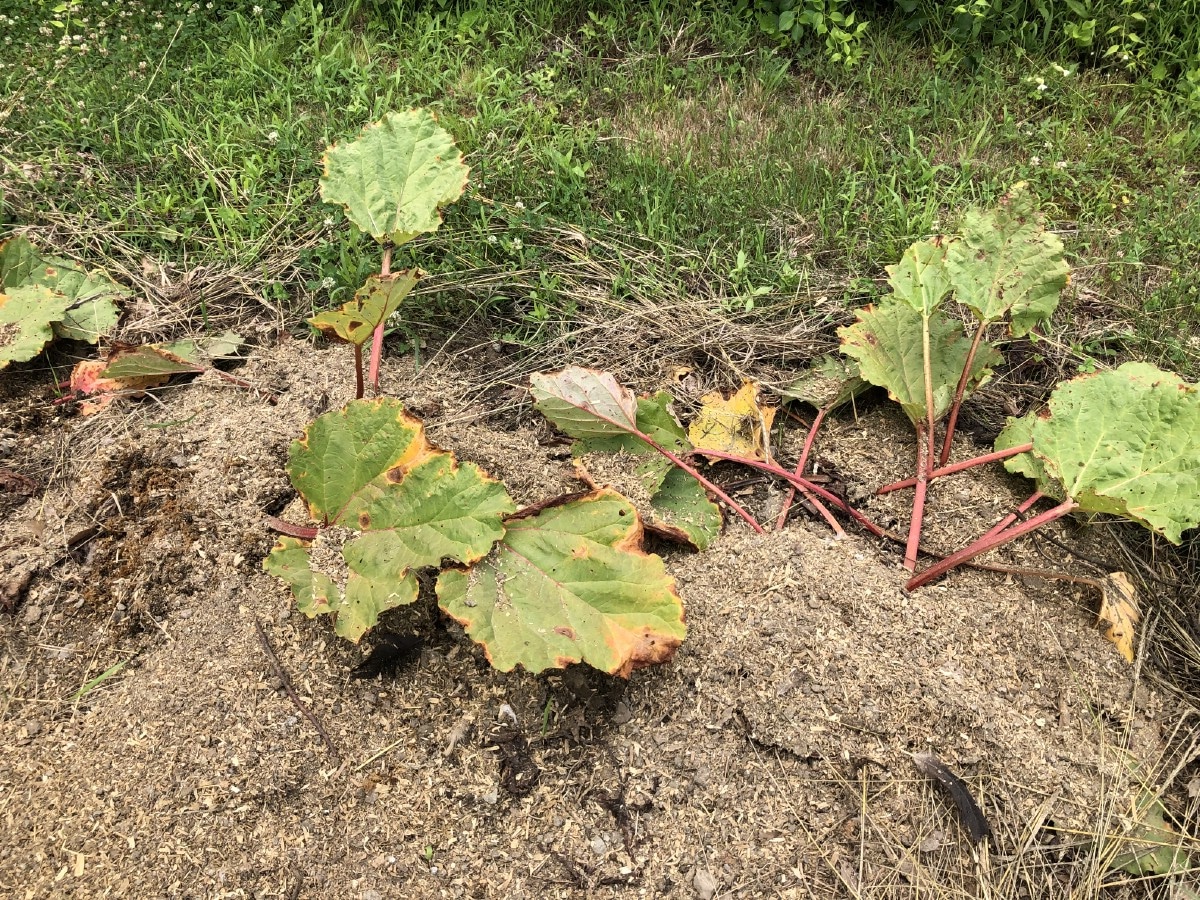
Plants that are often divided and replanted in the fall include:
- Rhubarb
- Asparagus
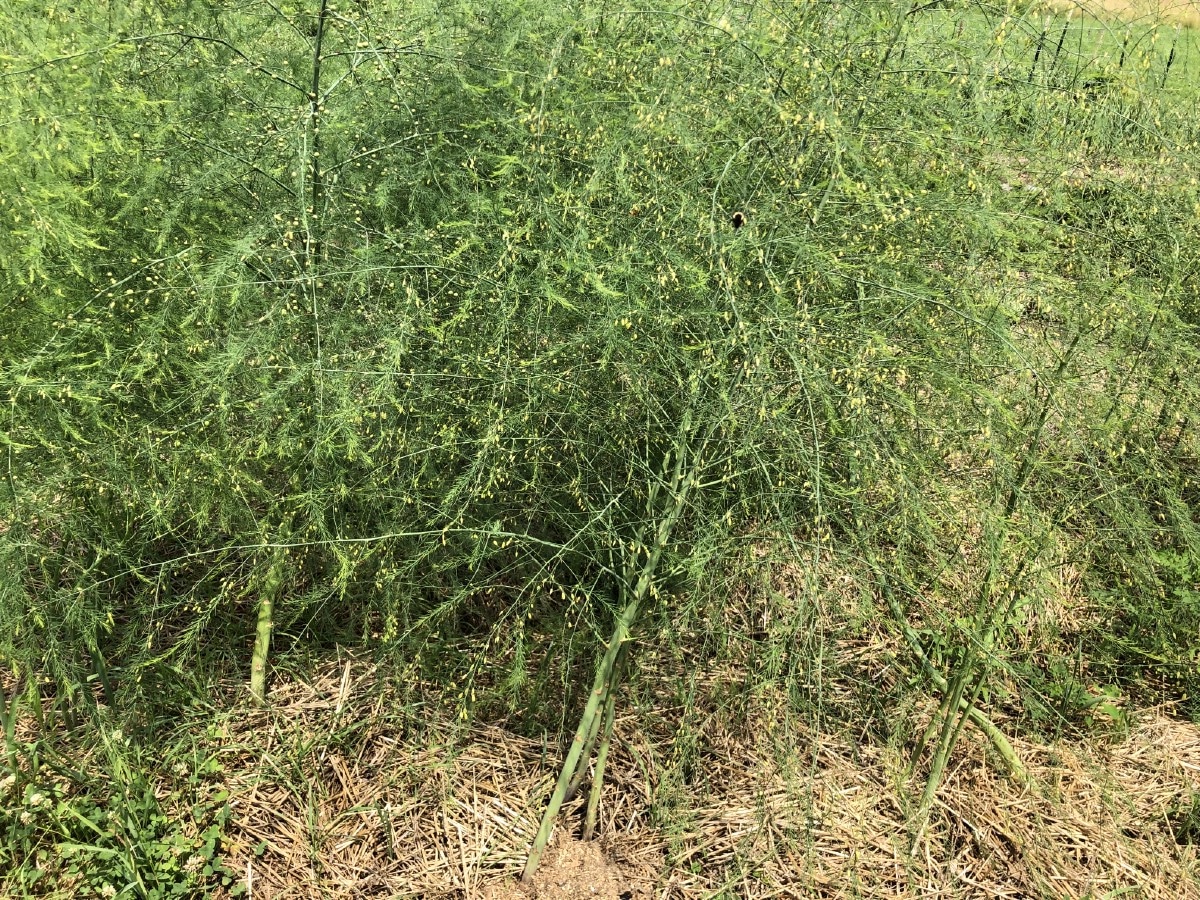
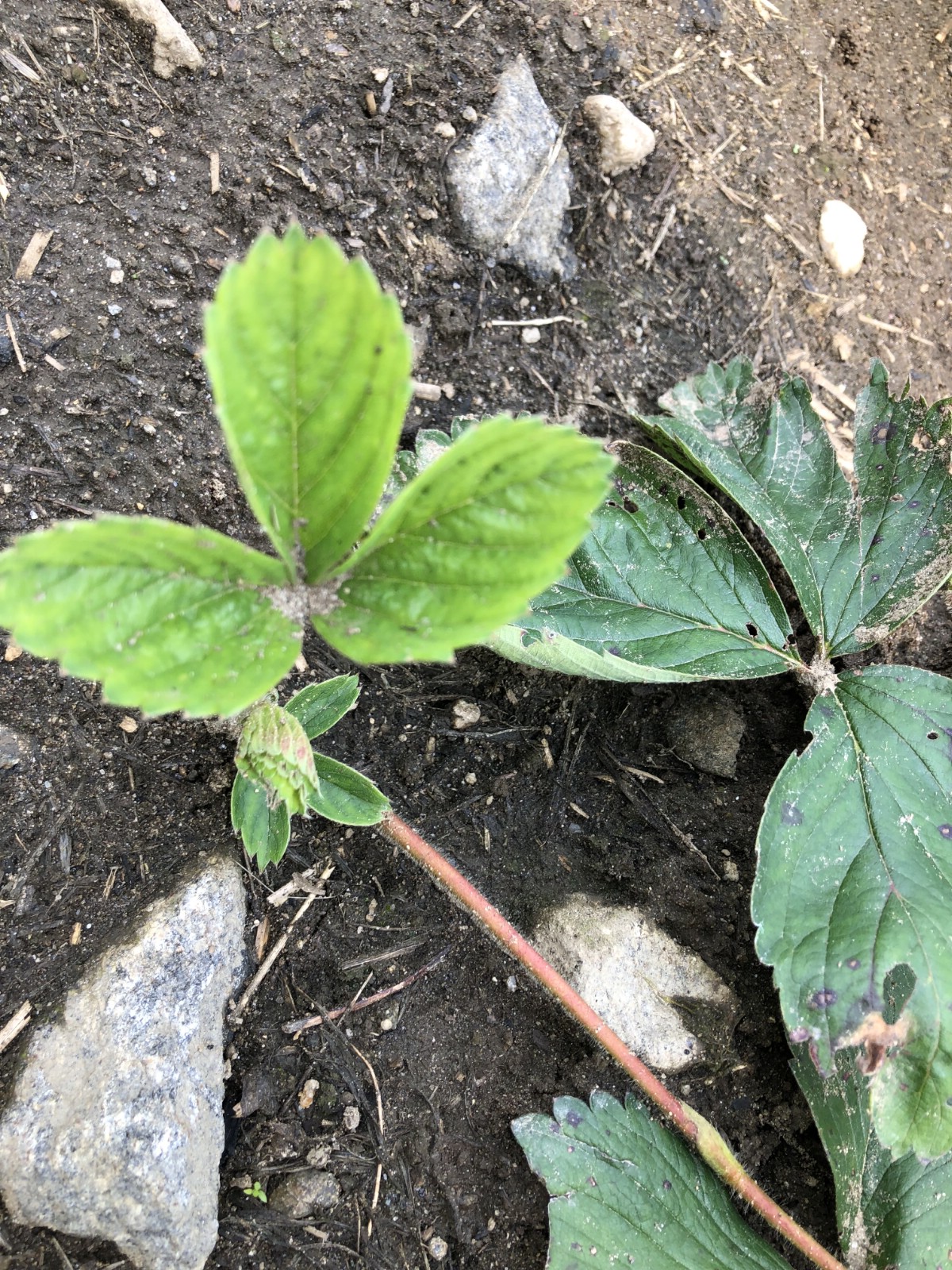
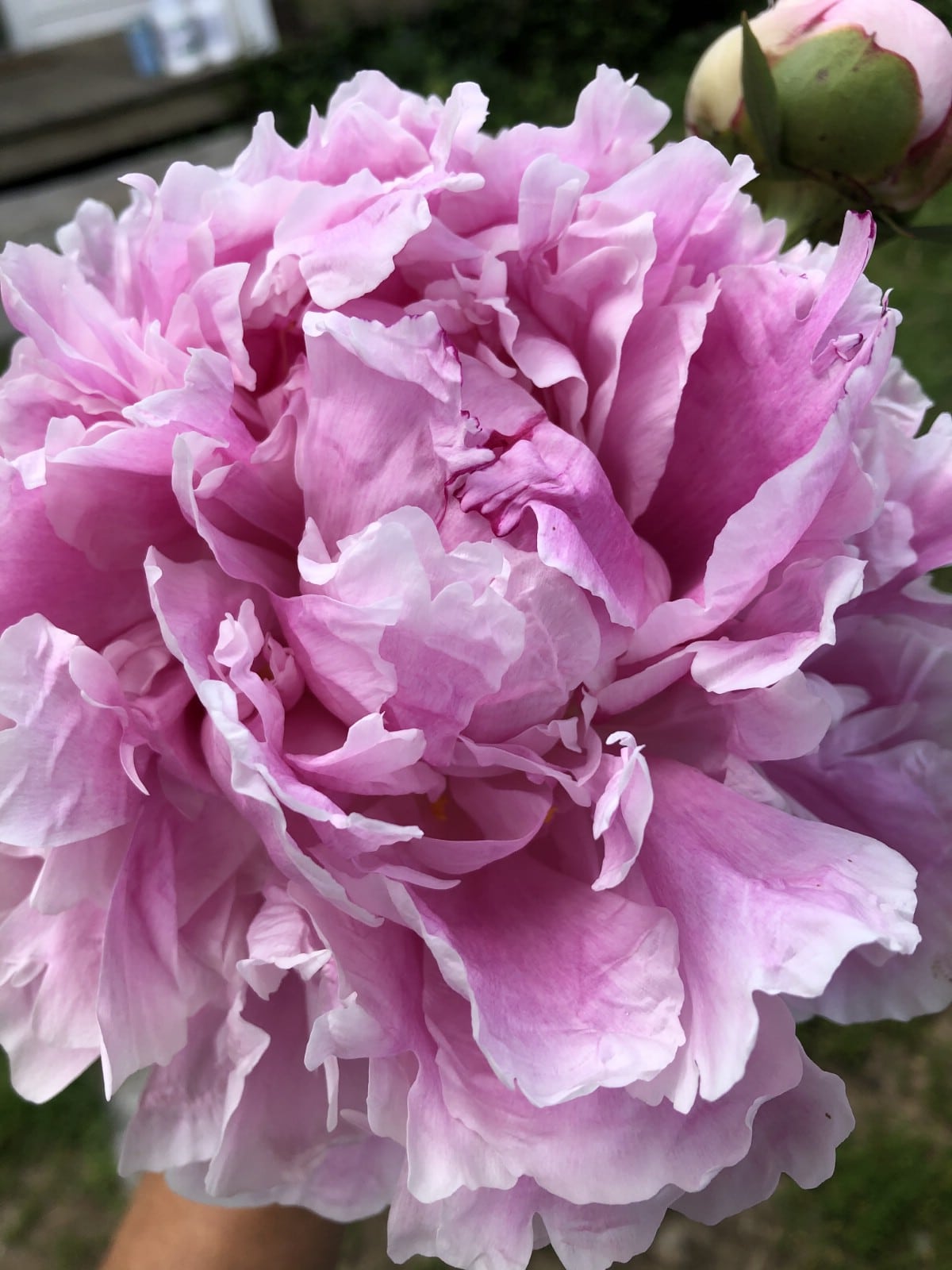
The plants you should not divide in the fall are those that are fall-bloomers. Spring and early-summer crops or bloomers usually appreciate being divided in the fall and not in the spring when they are doing their growing. Spring and summer bloomers will be more stressed by increasing warmth, production, growth, and temperatures but will not endure those stresses if divided in the fall when they are going dormant.
Cover Crops
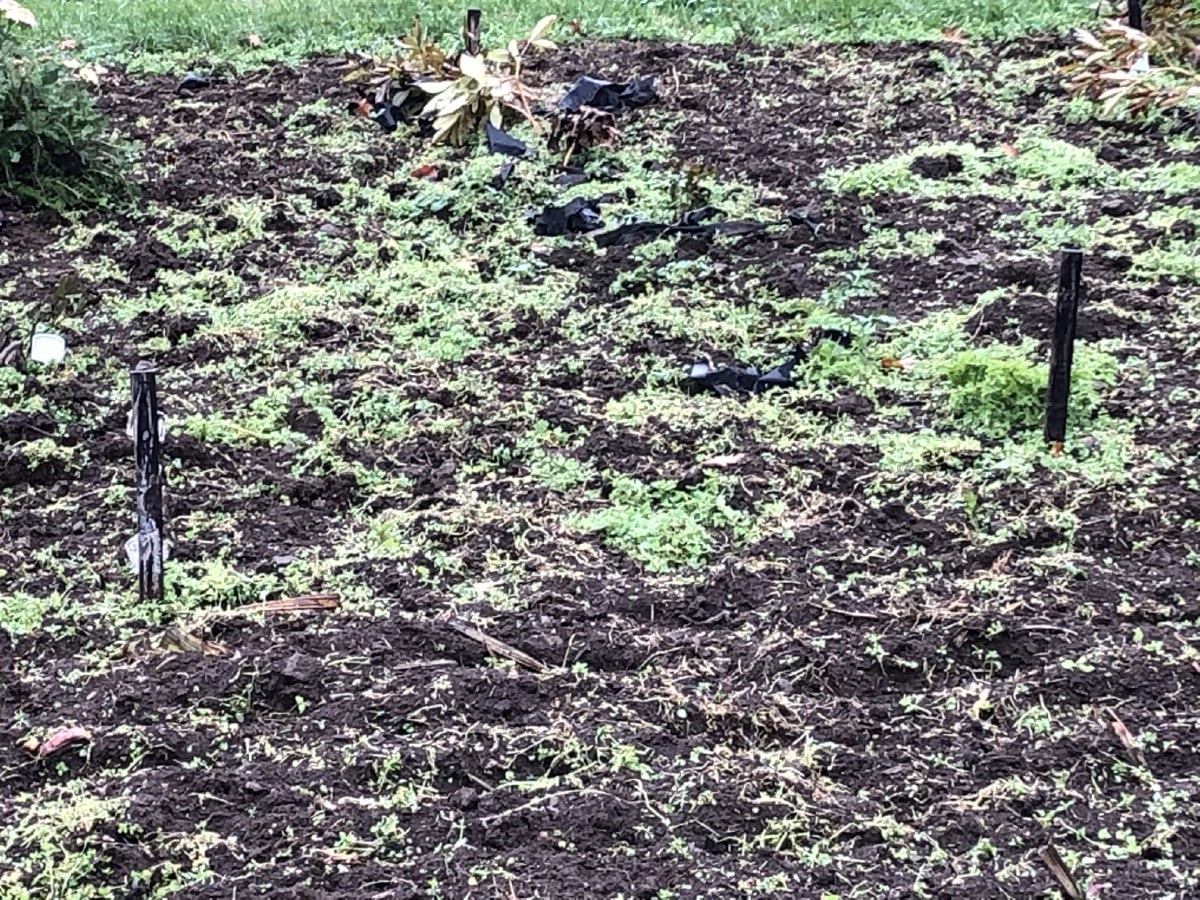
Cover crops are beneficial for a number of reasons, even for the small home gardener. Cover crops help prevent erosion during the months your garden is inactive. They are also an excellent source of “green” fertilizer that can be tilled or worked right into your garden soil before spring planting. Most are excellent sources of vital nutrients such as nitrogen.
Planting a cover crop in October can be iffy and often depends on the year and the weather you are having. However, since many of us are still actively gardening through September, it may not be possible to sow a cover crop earlier than October. You may still have time to plant an October cover crop if the seed is a fast-starter or a particularly cold-hardy variety. It just means doing a little more research to ensure good establishment this late in the year.
The best thing to do if you are looking to plant a cover crop in October is to research the specific variety in question. If you are looking for a cover crop to sow after mid-September and into early October, a winter rye or perennial ryegrass will be your best bet in the mid to lower growing zones. Higher zones will have more options, but the ryes are a good late cover crop for most growers to consider.
Autumn is Ideal for Planting Bush Crops, Plants, and Berries
The combination of cooler weather and still-warm soil temperatures makes fall a great time for planting many bushes because it encourages them to focus on root growth instead of leaf, blossom, or crop production. In turn this results in them building a better foundation. Good plant and bush establishment—especially for long-haul plants like bushes and shrubs—depends on root development first and foremost.
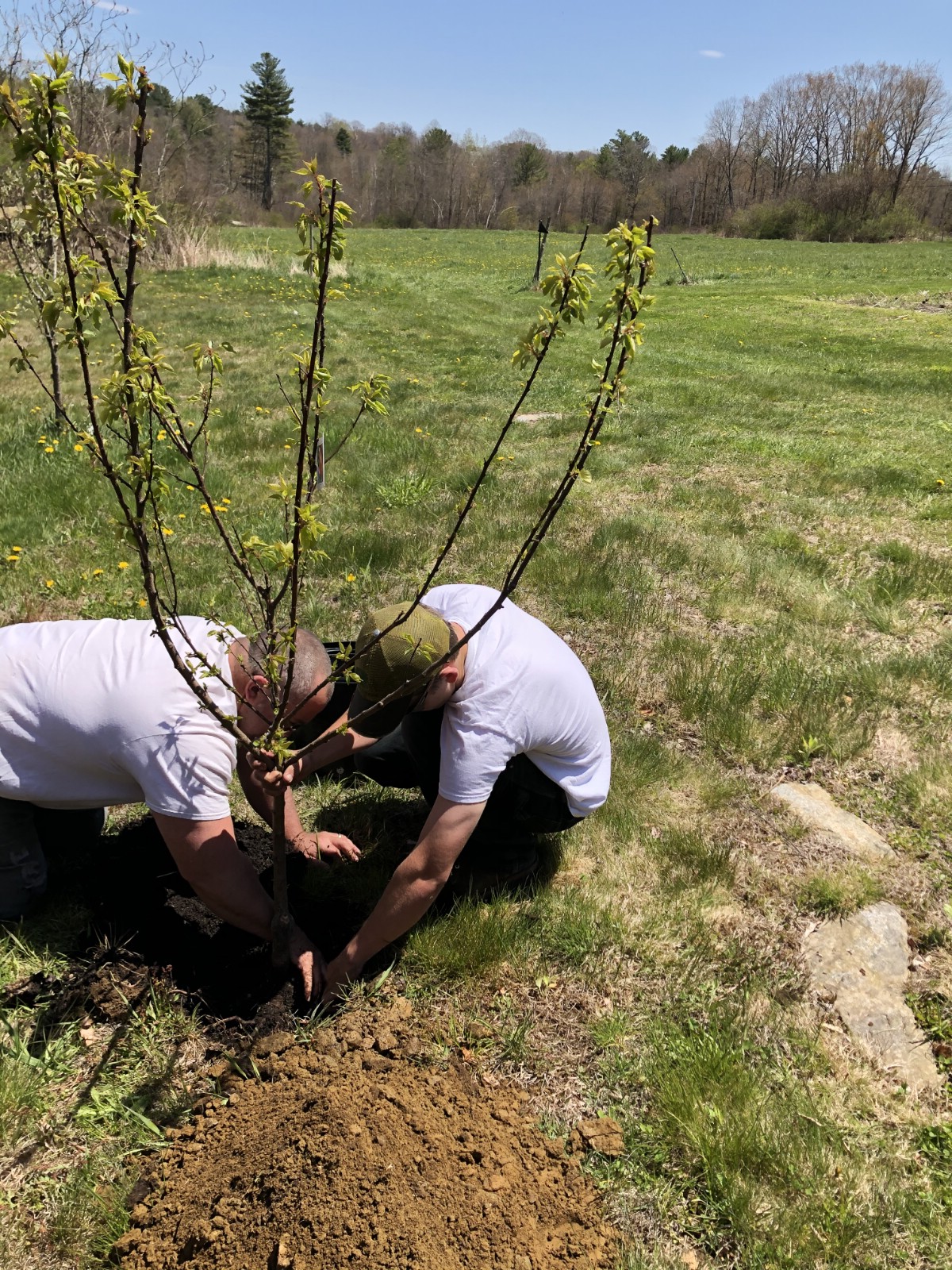
- Fruit Trees—most any tree that can be grown in your area can be planted in the fall.
- Strawberries—planting strawberries in the fall https://strawberryplants.org/fall-strawberry-plants/ is ideal because there’s no pinching of blossoms and the plants are in the ground, ready to bear a crop their first summer. This is how commercial growers do it—most do not plant strawberry plants in the spring at all! The difficult part of it is finding a grower that supplies strawberry plants for planting in October, but they are out there. Check the list at the link listed above.
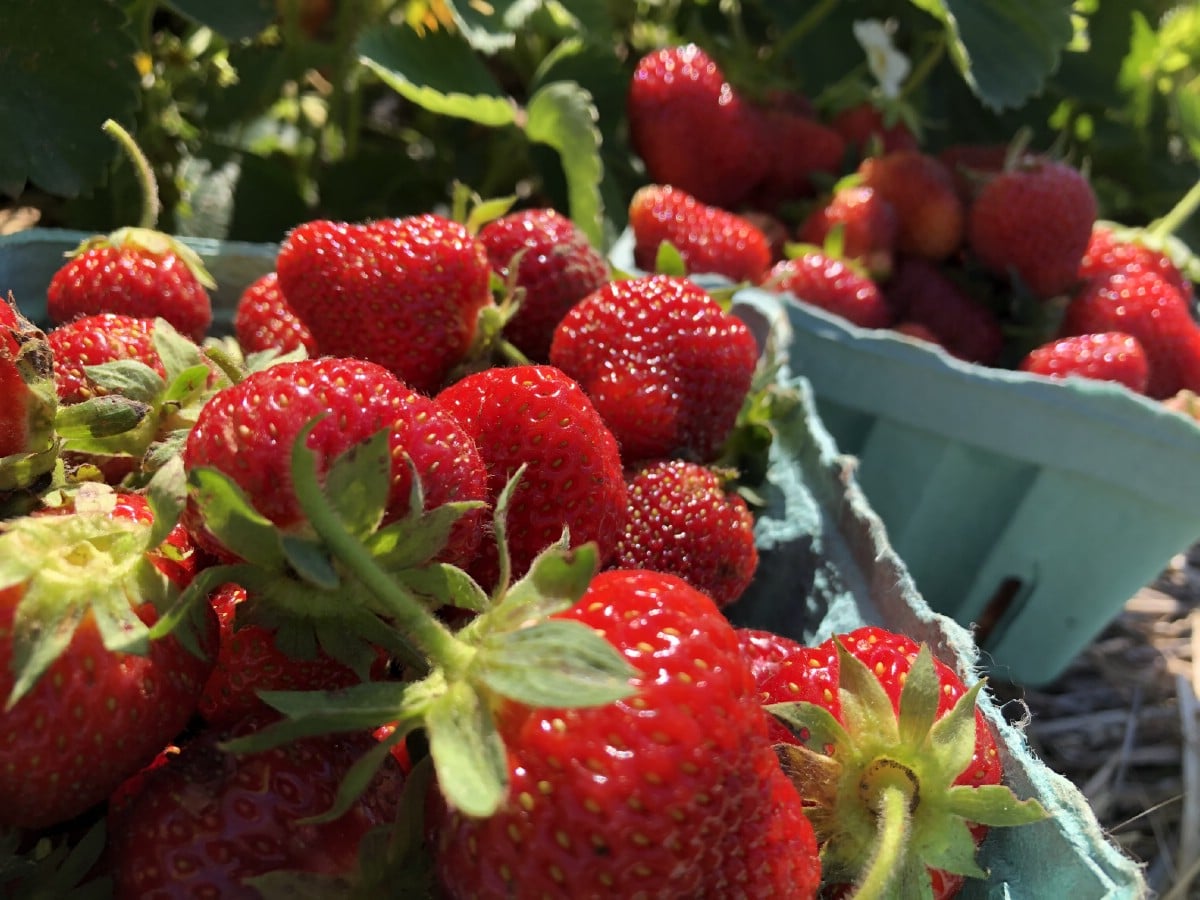
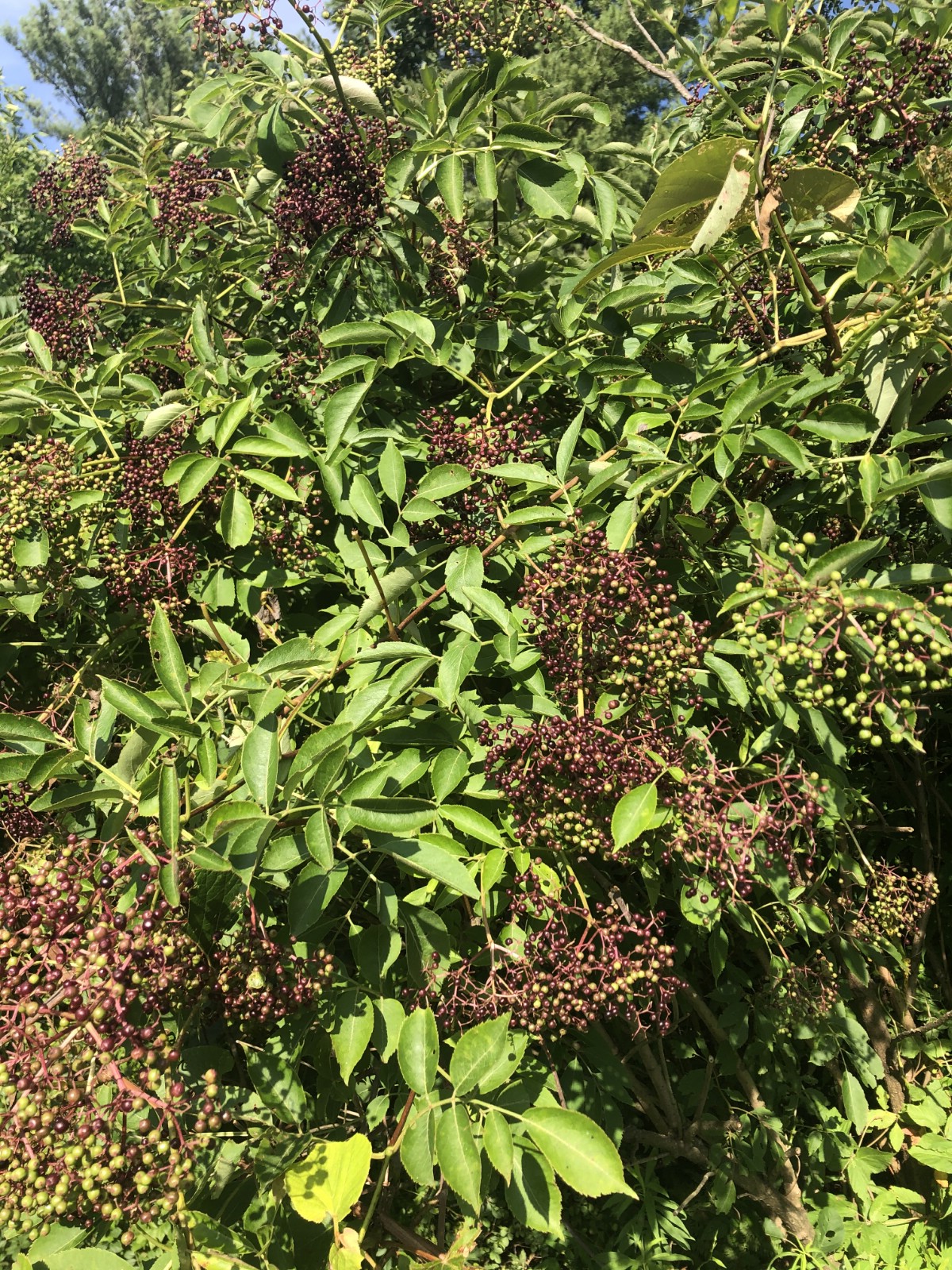
Plant Now for Spring Success
As long as your ground does not freeze hard in October or early November, these crops, bulbs, trees, and bushes can be planted in the ground now, where they will be ready for early establishment in the spring. They will benefit from better, earlier growth because they will be waking with the rhythms of nature earlier than when you will be able to get onto the ground for spring planting. Hardy fall-planted plants will also be able to work more in step with rhythms of dormancy and water requirements.
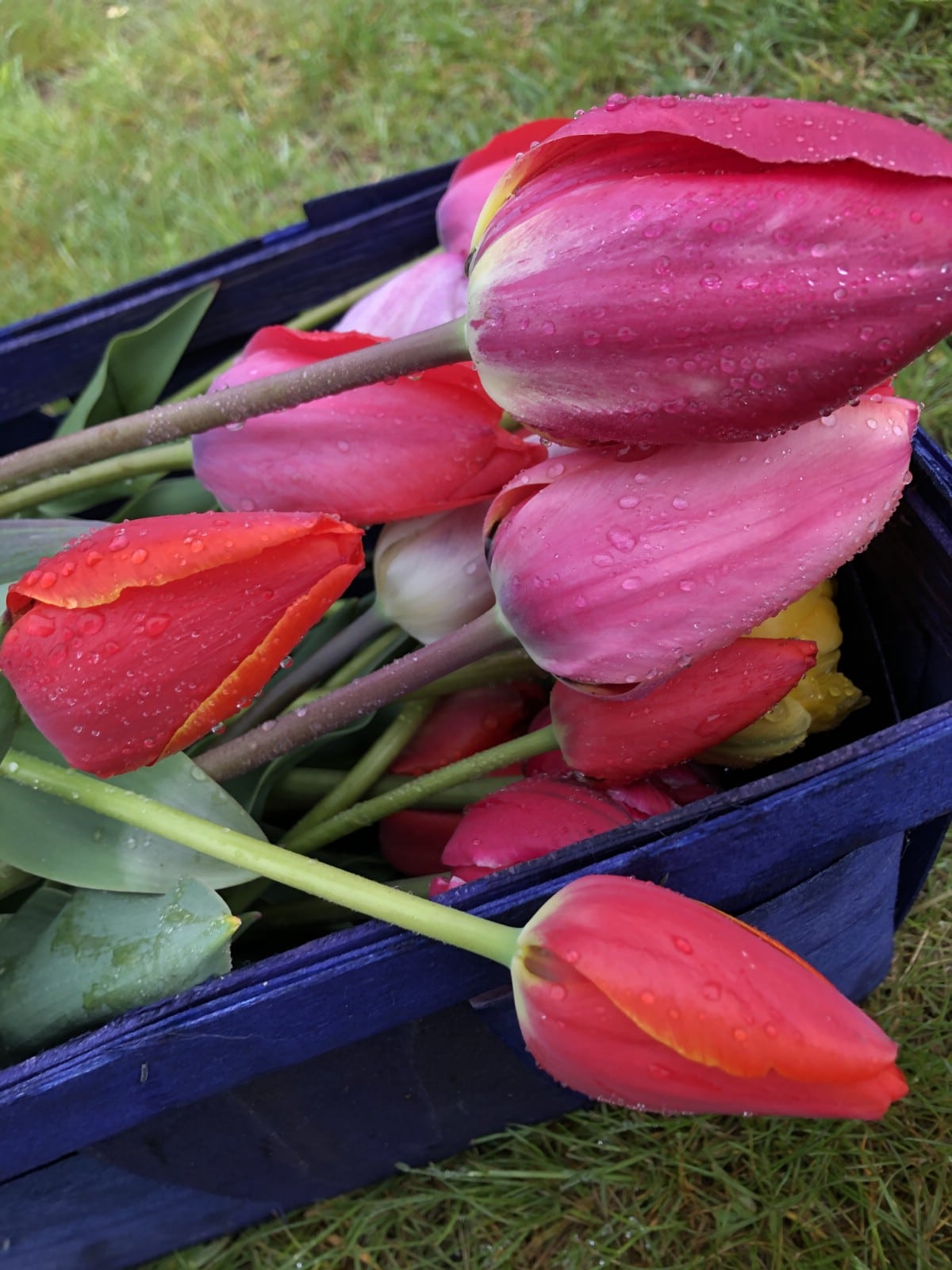
Basically, they will wake and grow with the natural timing of life in your location, as opposed to the confusion the plants may experience between nursery life and real-life out of doors. And you will enjoy the comfort of knowing you have new life and plants in the ground, waiting to greet you with the strong spring sun!

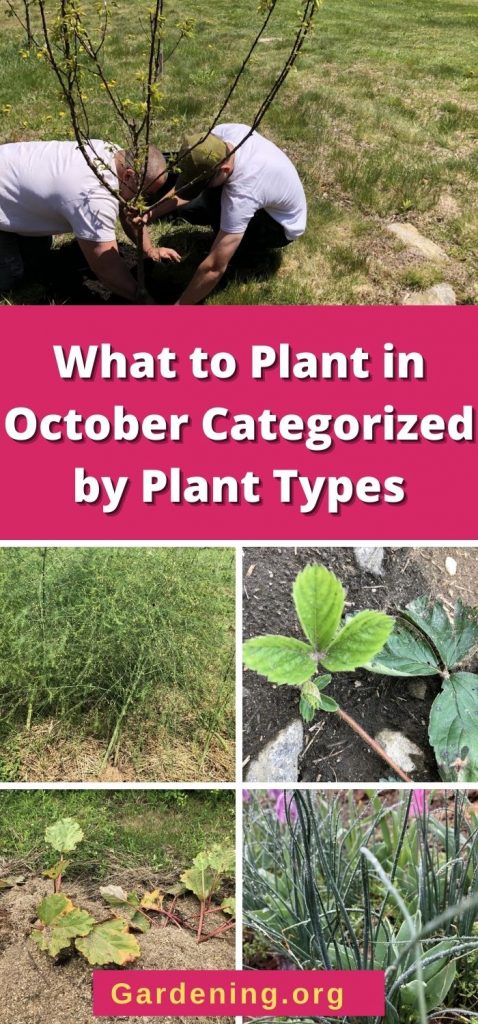
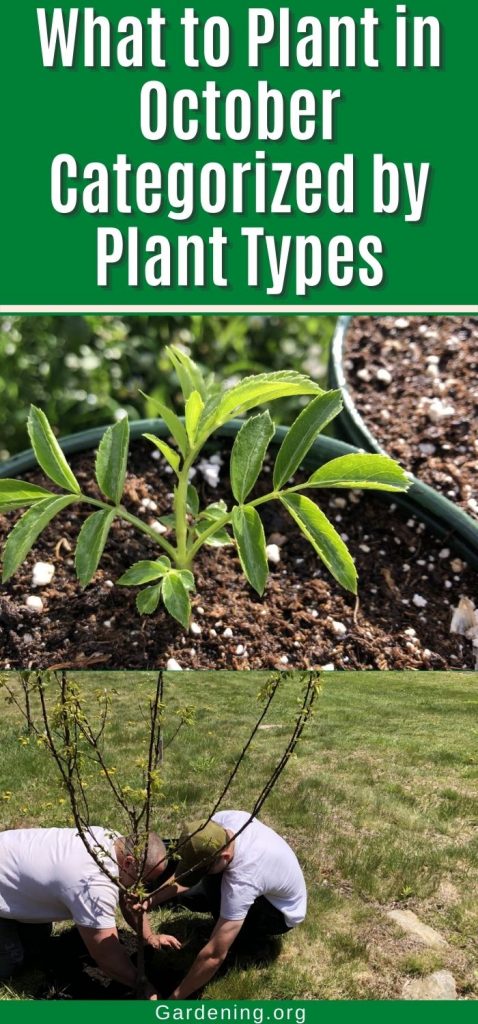
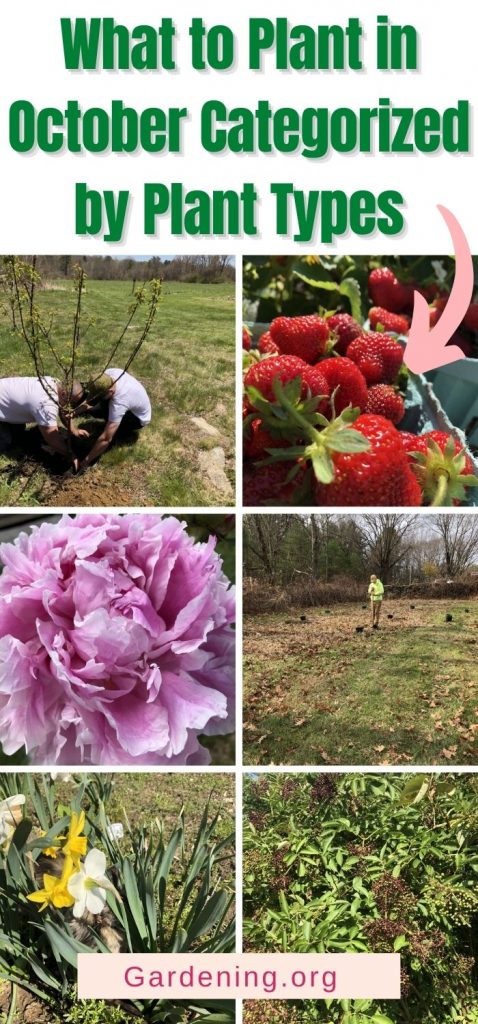
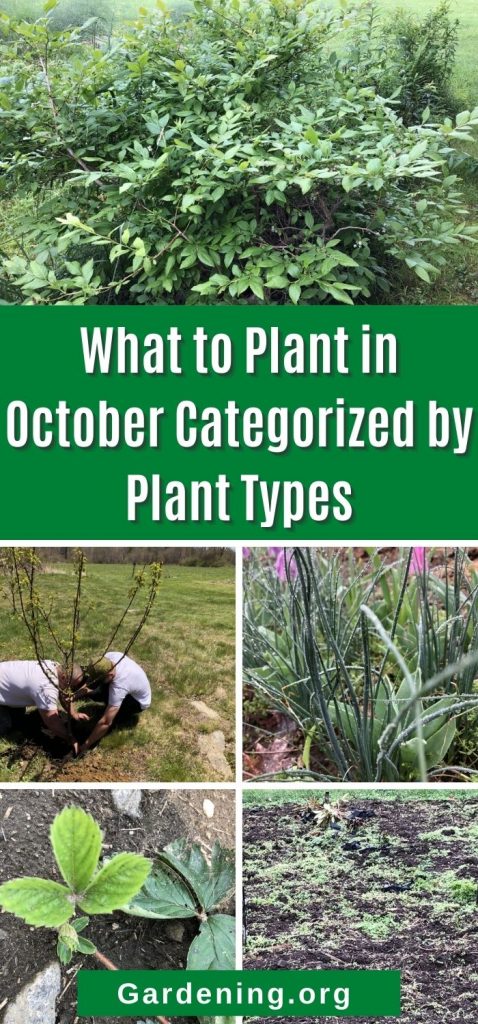
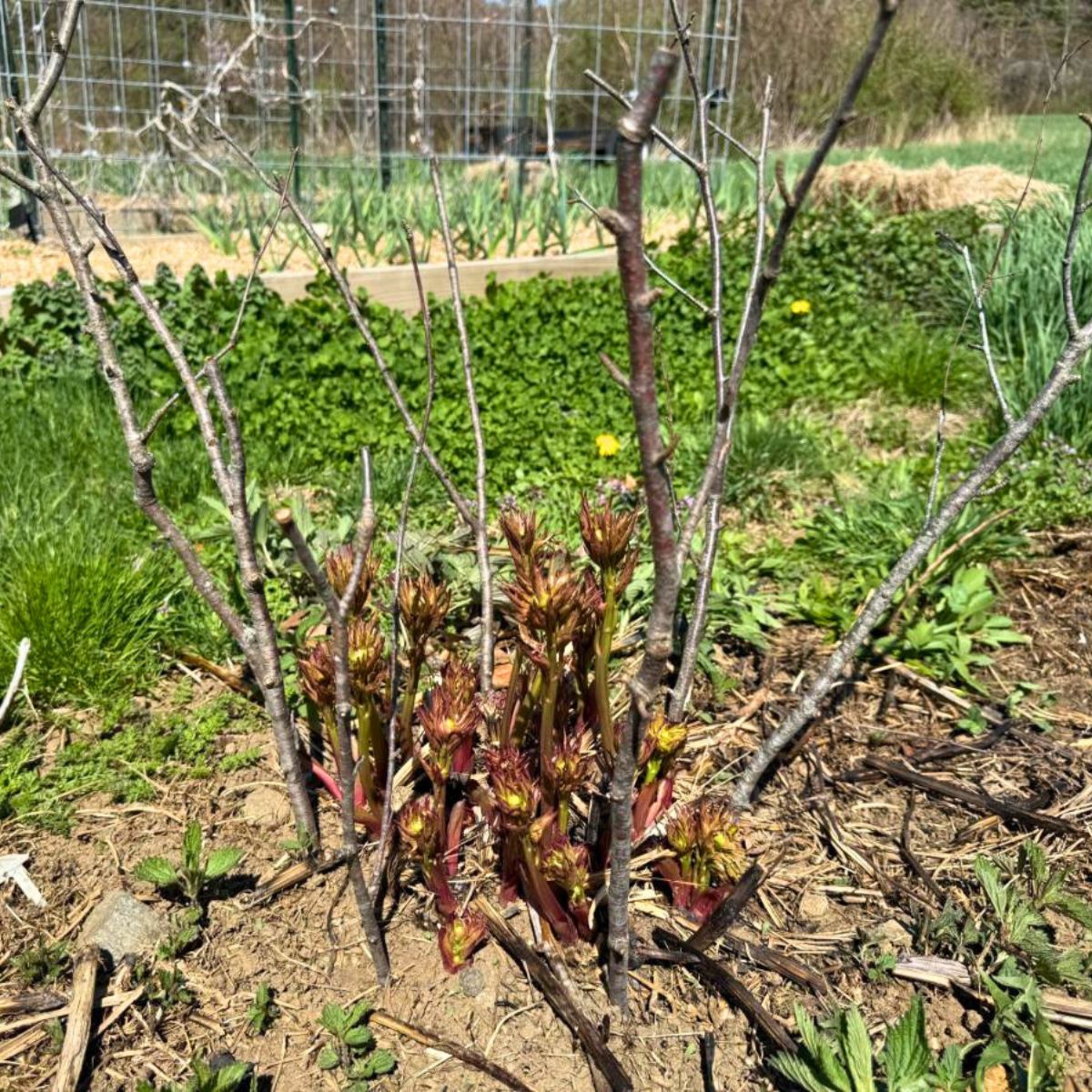
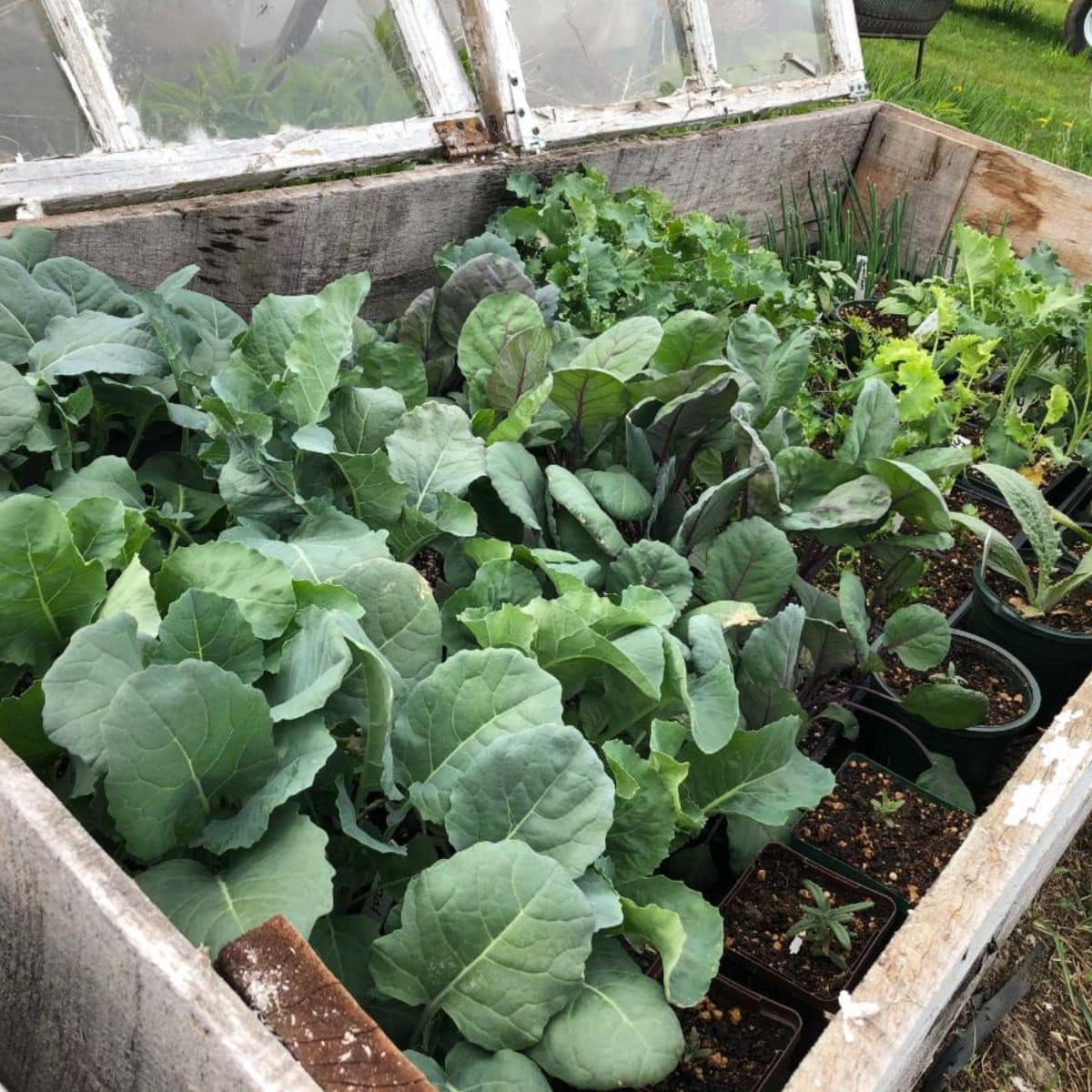

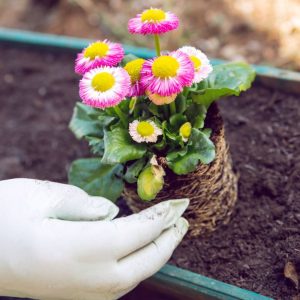
Christine Briggs
Unfortunately we are in the Southern Hemisphere and it's early Spring here.